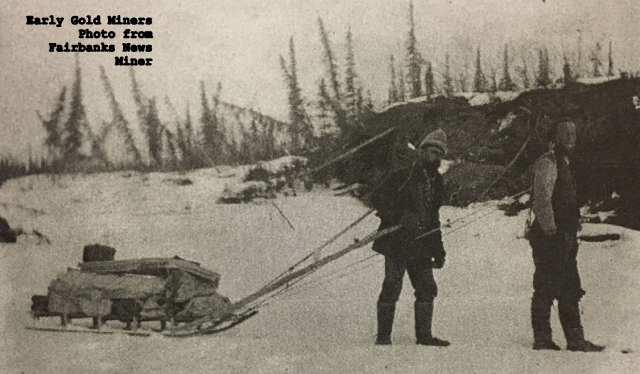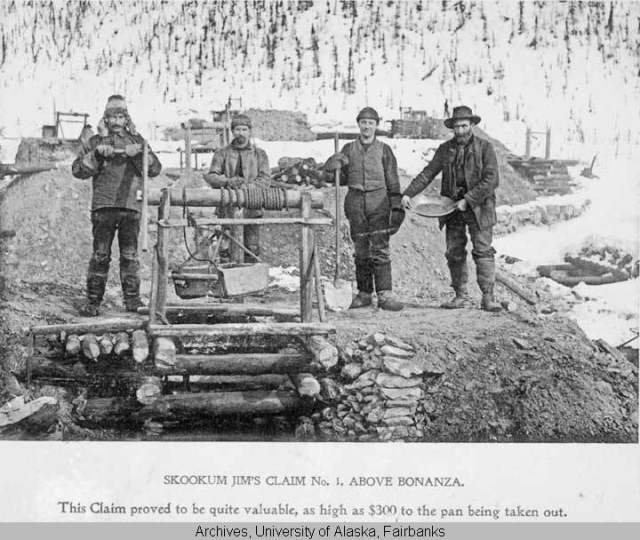
Minerals seeded the streams and rivers of the isolated far north. If the rugged country offered animals with exquisite pelts, it also offered gold. But for a very long time the tiny, scattered populations of First Nations natives and fur traders knew nothing of minerals or gold.
Outsiders Inevitably Came to the Far North
During the last decades of the 19th century men found gold in in Sitka and Windham Bay. In 1880 Joseph Juneau and Richard Harris struck gold in Juneau. Word spread, and a trickle of hardy prospectors began making their way north.

They used, of course, the same trail systems as the primordial tribes and the traders; extended them just a bit here and there. The few early prospectors blended in. They rested, refitted and even made homes at the trading post towns and villages. Some took native brides. And, like their predecessors, they changed the world of the natives, teaching them the value of gold and how to seek it.
Down on the Alaska Peninsula the Tlingit tribe controlled the difficult routes over the coastal mountains into the Yukon interior. They used those routes—one over the White Pass and the other over the Chilkoot—to trade with the tribes of the interior. In the 1890’s “Skookum Jim”, a member of the Tlingit Tribe, worked as a packer on the Chilkoot and had spent years exploring the White Pass.
In 1896 Jim and his friend “Tagish Charlie” accompanied George Carmack, a prospector from Seattle, to the area around Rabbit Creek in the Klondike. There, on August 17, they made the gold strike that would reverberate around the world.

Another interesting read. Thank you for sharing
You are welcome
Nice story, tell us more. Please.
more on the way.
AWESOME!!! Thanks for sharing
Very glad you enjoyed it.